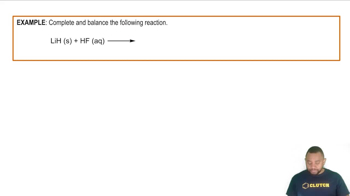Here are the essential concepts you must grasp in order to answer the question correctly.
Entropy (ΔS)
Entropy, denoted as ΔS, is a measure of the disorder or randomness in a system. In chemical reactions, an increase in the number of gas molecules typically leads to an increase in entropy, as more particles can occupy more microstates. Therefore, when 2 moles of gaseous reactants convert to 3 moles of gaseous products, we expect ΔS to be positive, indicating an increase in disorder.
Recommended video:
Entropy in Thermodynamics
Gaseous Reactants and Products
Gaseous reactants and products play a crucial role in determining the change in entropy during a reaction. The transition from fewer gas molecules to more gas molecules generally results in a greater number of possible arrangements and configurations, thus increasing the system's entropy. This concept is essential for predicting the sign of ΔS in reactions involving gases.
Recommended video:
Production of Hydrogen Example
Thermodynamic Processes and Entropy Changes
Different thermodynamic processes can lead to varying changes in entropy. For example, processes that involve phase changes, mixing of substances, or reactions that produce more gas molecules typically result in an increase in entropy. Analyzing specific processes, such as those in Exercise 19.11, requires understanding how these factors influence the overall entropy of the system.
Recommended video:
Entropy in Thermodynamics
 Verified step by step guidance
Verified step by step guidance

